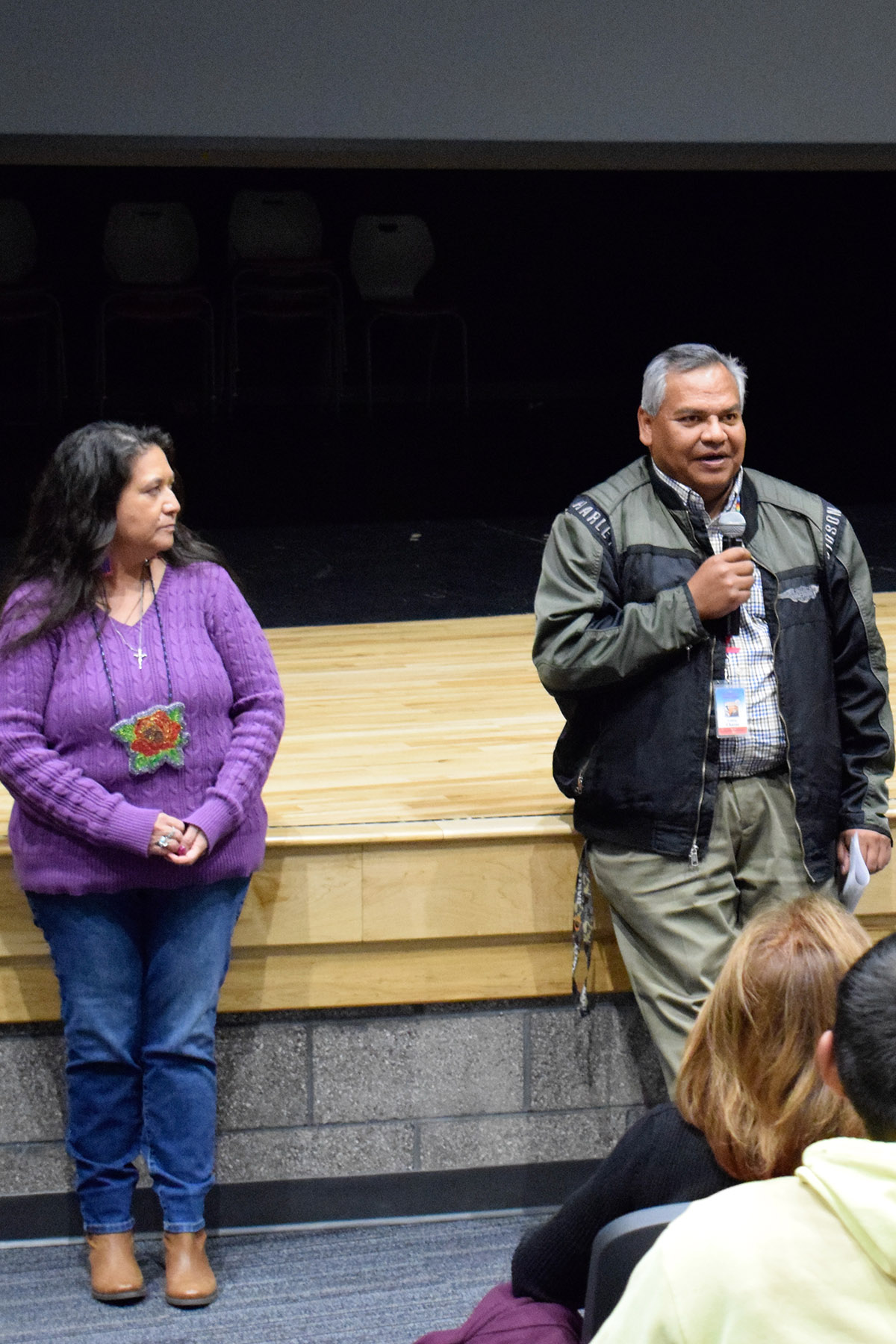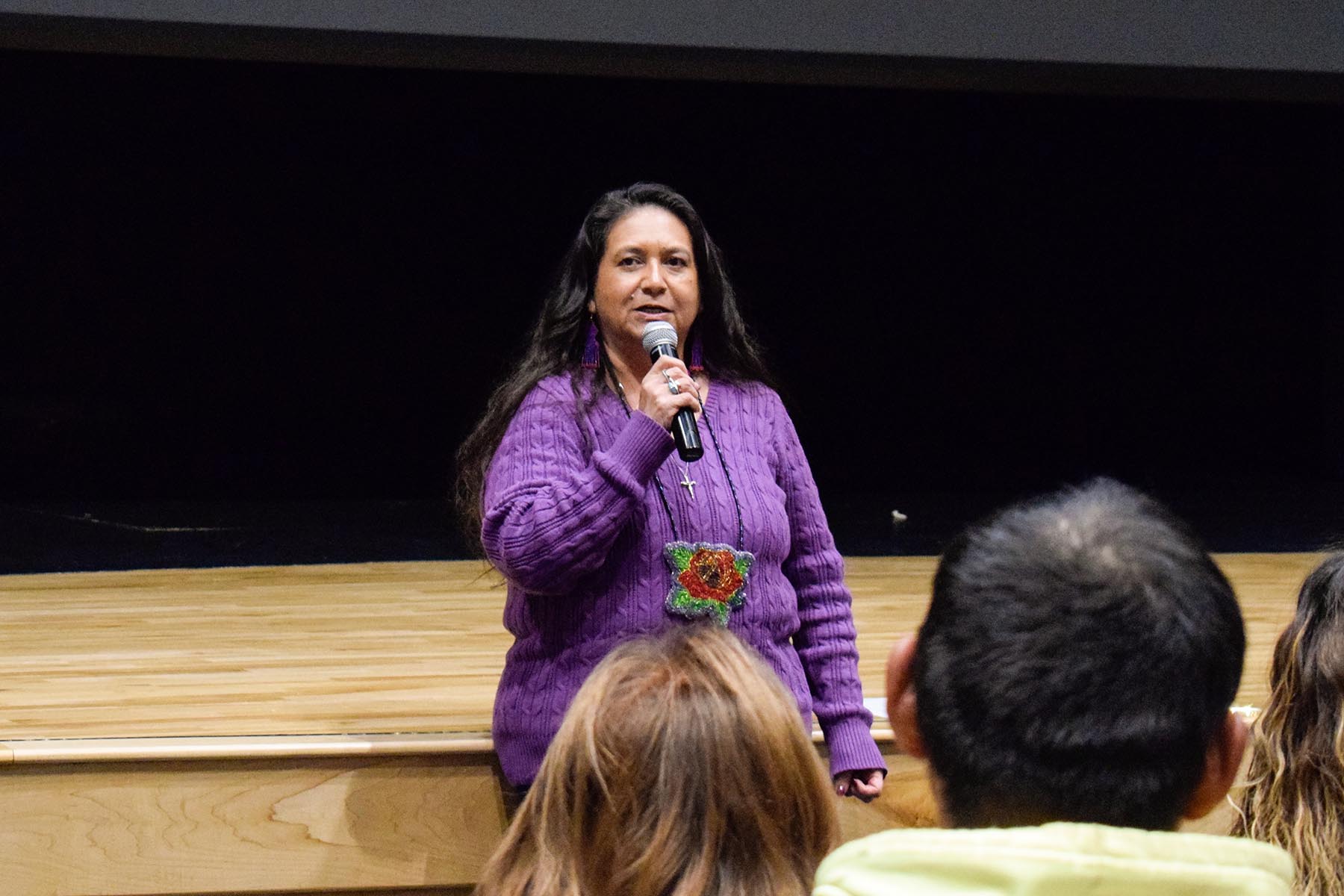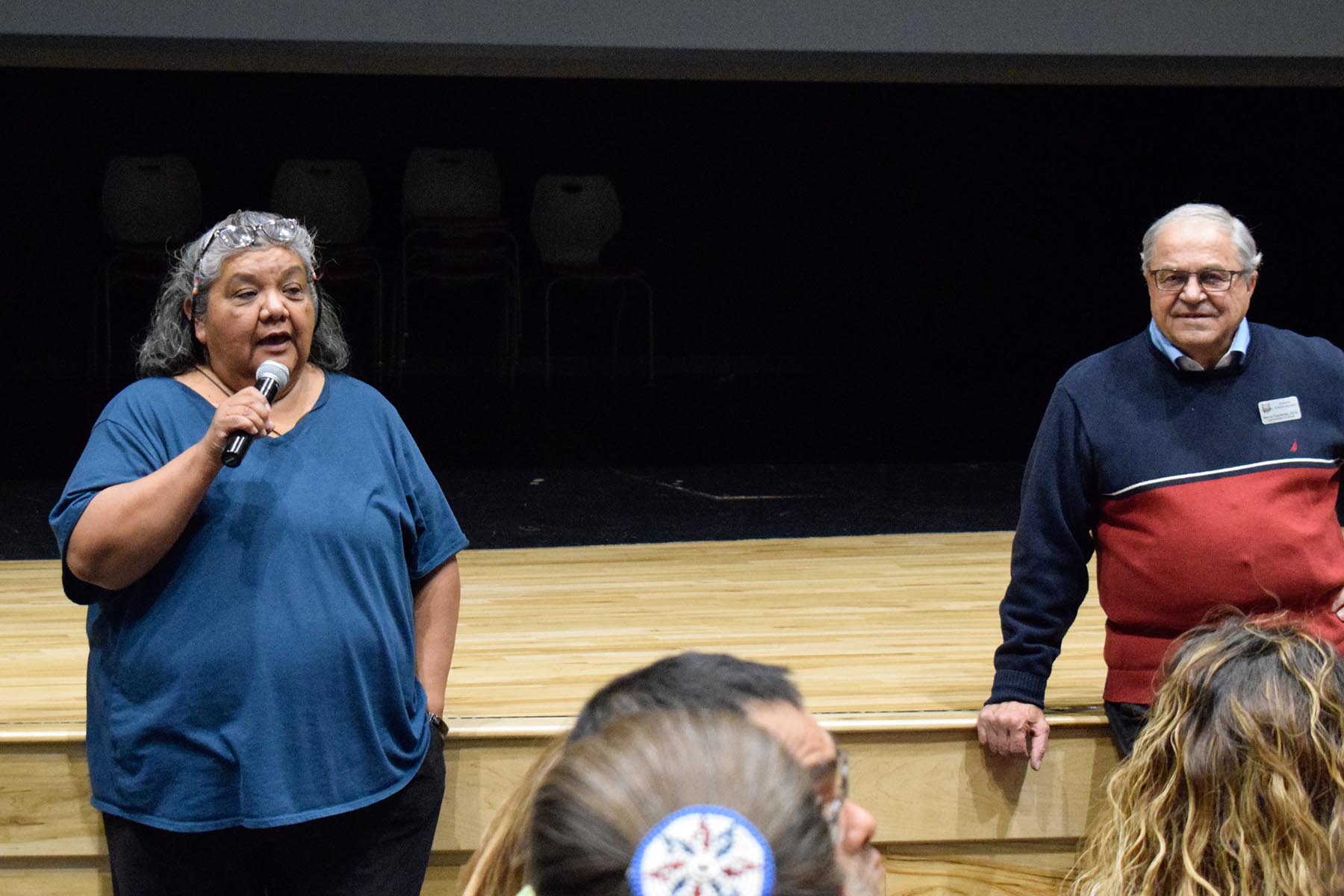It was a special Indian Policy and Procedures (IPP) meeting as the Southern Ute Indian Tribe hosted the coinciding Colorado Commissioners of Indian Affairs (CCIA) meeting this year, with Lieutenant Governor Dianne Primavera as one of the guests. This was an important step for the state to understand the issues that Southern Ute and other Native American students face in their education, many of whom are enrolled in the Ignacio School District and the Southern Ute Indian Montessori Academy.
“We are here to listen and to learn and hear about all the great things that the school has done and find out ways of maybe how we could assist in any ways that you might need to improve your school systems,” said Lieutenant Governor Primavera in her welcoming speech.
Members of the Southern Ute Tribal Council, along with Primavera, were also in attendance to discuss issues and raise concerns at the governmental level. Parents, grandparents and guardians were also encouraged to attend and raise their own voice on issues in order to help push the standards set for their own child’s education.
For the Ignacio School District, the IPP meeting is a chance to show the progress that the district has done in the past year and how they help Indigenous students throughout the district. For many parents, this was a way to get better informed on the programs and services that are offered within the district. Participation, student attendance, language and cultural classes were some of the important topics discussed.
“This is what this meeting is about,” stated Chairman Christine Sage. “To help our Native American students…they are our future.”
The Ignacio School District has been making progress with their academic achievements and test scores within the 2018-2019 school year. The district is no longer in the category of “Priority Improvement,” but is now in the “Improving” category based on Colorado State Standards. According to Dr. Kathy Pokorney, the district is now within 40th to 60th percentile in their academic achievement. Most students are testing in the average range with most students scoring within this percentile. The Elementary and High School has moved in in the “Improvement” category, while the middle school is maintaining a “Performance” rating.
“We are pretty excited about that, and we are on the right track,” said Pokorney.
The overall performance of Native American students and their test scores, in particular, were not discussed during this meeting.
The district also gave an update on the attendance rates of Southern Ute and other Native American students. This update was given by the individual principals with the district; Barbara Fjerstad of the Elementary School, Chris deKay of the Middle School, and Melanie Taylor of the High School.
“We take attendance by period…if they miss a single period, it shows up on their attendance,” explained Middle School Principal Chris deKay. “Any missing time is really important.” The Elementary school differs by taking attendance in the morning and after the lunch period.
The District policy for absences only allows for four full days of unexcused absences and ten days of excused. After a student meets the criteria for these absences, a mediation will occur with the principal and the truancy team to map out an attendance contract. Further mediation can be enforced by the Southern Ute Truancy Team.
“In my eyes, excused or unexcused, doesn’t make a difference,” said Elementary School Principal Barbara Fjerstad. “They are not getting their education. We need them to learn [and be in class].”
As of the 2018 year, there was an attendance rate of 92 percent in the Elementary school, 90 percent in the Middle School, 95 percent in the High School. An average of 90 percent was recorded for the entire district. As of the meeting, the District has a goal to have 95 percent attendance across all three school in the 2019-2020 year.
Another topic that was heavily discussed was that of parent participation. In early October, the school district sent out over 300 surveys to parents of Native American children along with the information regarding the IPP meeting. Only 13 surveys were returned from parents. This raised a concern from the Ignacio School District as those surveys allow for feedback on cultural events and improvements on student activities and academics.
“We try everything we can,” said Superintendent Dr. Rocco Fuschetto. “We send reminders. This is information that we need…if there are any concerns good or bad, so we [will] know where we can improve.”
At the IPP meeting only a handful of parents, grandparents and guardians were in attendance, resulting in questions being asked surrounding how more parent participation and involvement can occur.
“We need our parents involved. We are parents who are expressing our concerns,” stated former Tribal Council member and parent, Alex Cloud. “We need to push other parents [to attend], so they can get their questions answered.”
Other commentators suggested that it is not just parents that need accountability, but also teachers who are willing to take their jobs seriously by helping those children in need by taking into consideration their cultural and academic needs.
As for culture, the Ignacio School district has taken Native American Heritage Month into full account for their curriculum. Cultural presentations including the Round Dance and traditional drummers have taken place during the month of November. Classes study Native American history and culture more in depth. According to the results of the survey, parents raised concerns why this cultural emphasis only applies to the month of November and not throughout the year. A complete list of cultural activities as well as the results of the survey were given out as part of a packet at the meeting.
A similar issue was brought up about the quality of cultural education within such classes as Native Studies and Ute Language classes. Currently, the Ute Language class is not being offered within the 2019-2020 school year. The class was cancelled after there were not enough students being enrolled in the course. According to Superintendent Fuschetto, another issue stems from not having a qualified teacher to teach the class as well as not having one sanctioned by Tribal Council per the initial agreement made more than eight years ago. As of now, the class is expected to be offered in the 2020-2021 school year.
The Southern Ute Indian Montessori Academy (SUIMA) was also present at the IPP Meeting and gave a report on their 2018-2019 academic year. According to their report, SUIMA has been making many improvements over the last school year. Currently improving on attendance and academics. SUIMA recently adopted the same attendance policy as the school district.
In academics, SUIMA has now increased their instruction time in all classes. Instead of one hour of full instruction in some classes, students now receive up to three or more hours of instruction. Along with this, students are now taking such progress tests like the STAR Reading test to help teachers map their student’s progress in reading. These steps are helping SUIMA become more aligned with the Colorado State Standards while still keeping the Montessori method, helping students become more prepared for the jump into public school.
“When we were working on our policy book this summer, we had out the elementary handbook…and middle school handbook from Ignacio and Bayfield,” explained SUIMA Principal Mary Jo Owens, “Now we have a lot of things aligned with those districts.”






